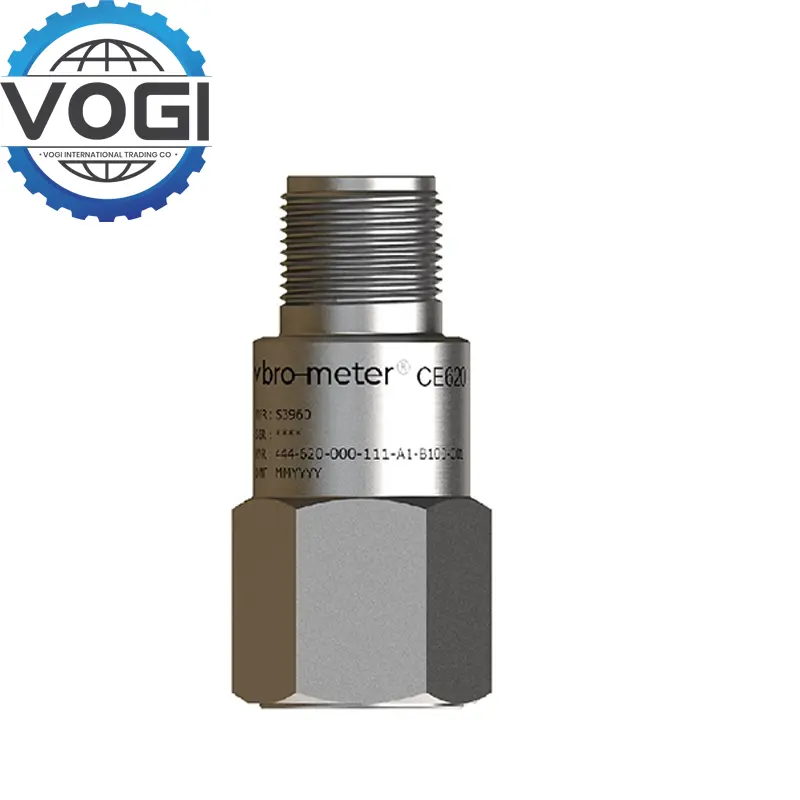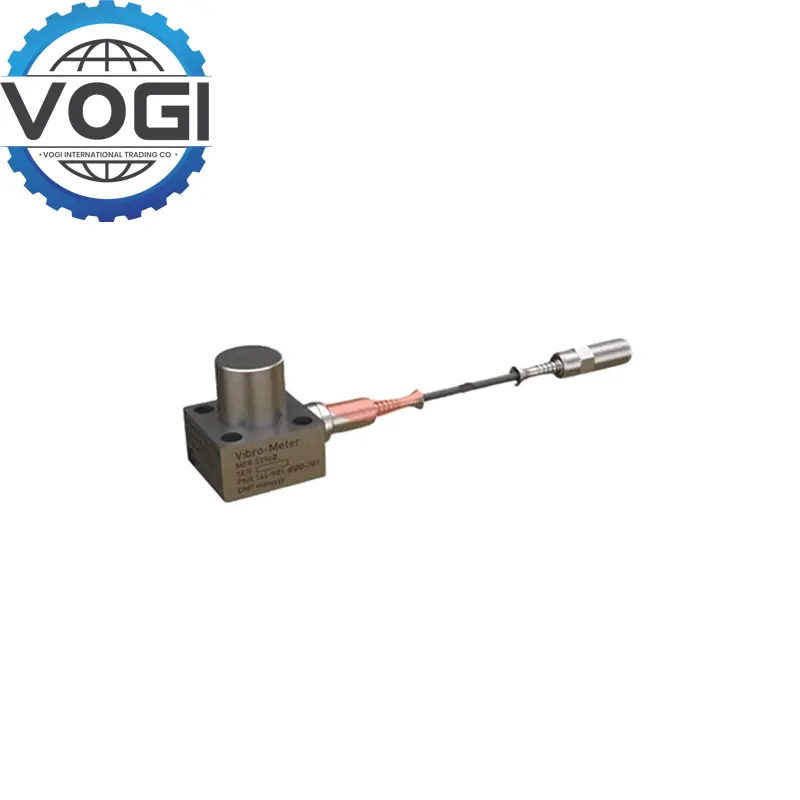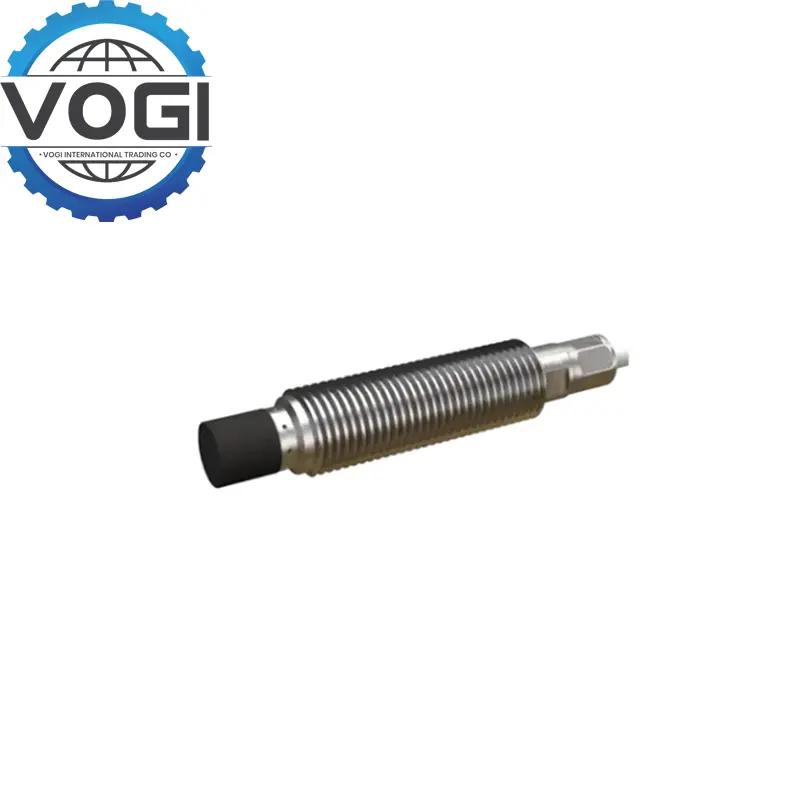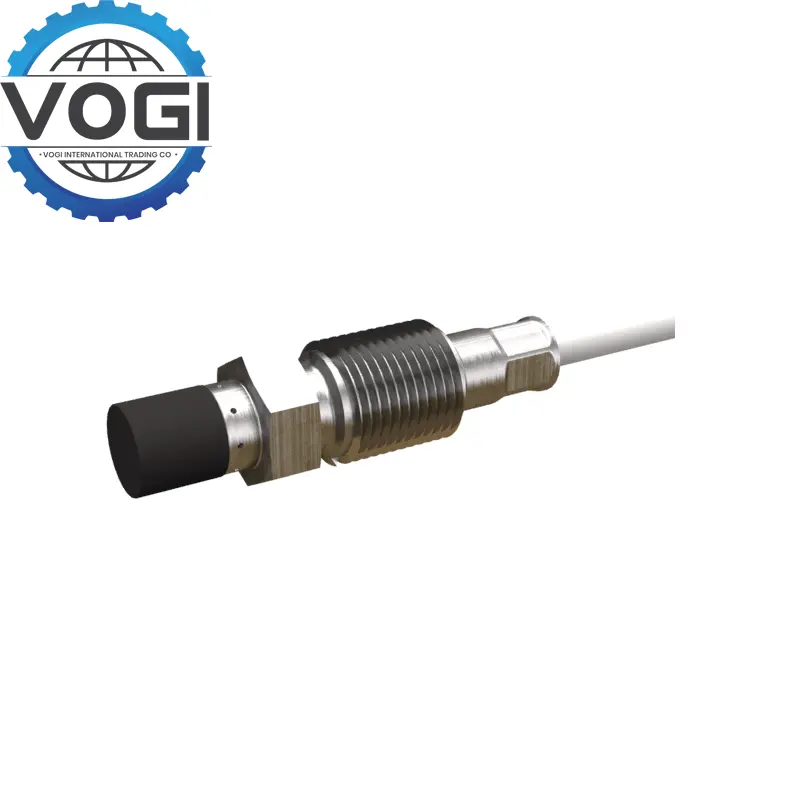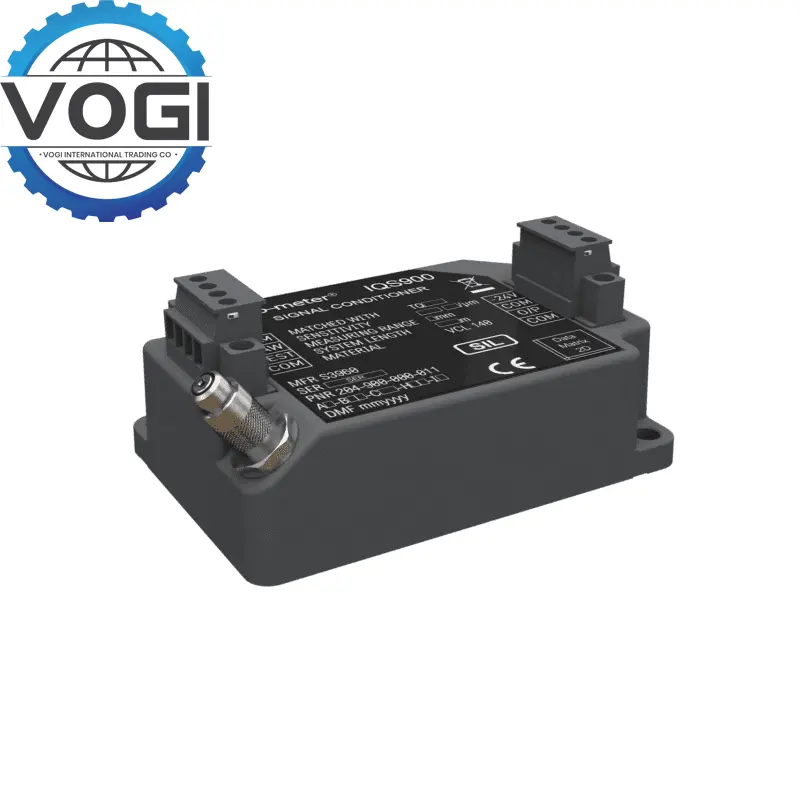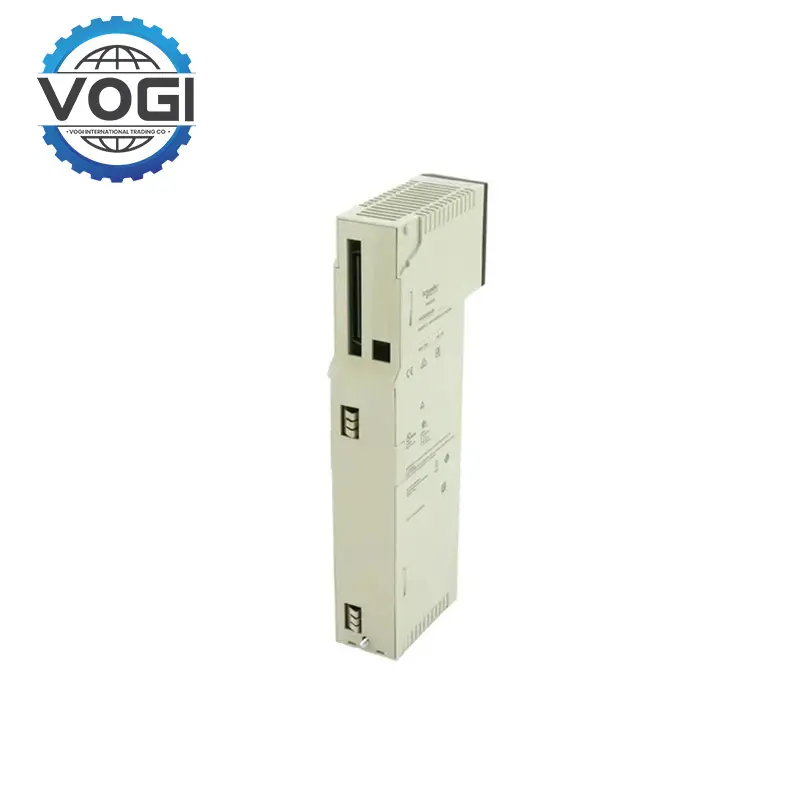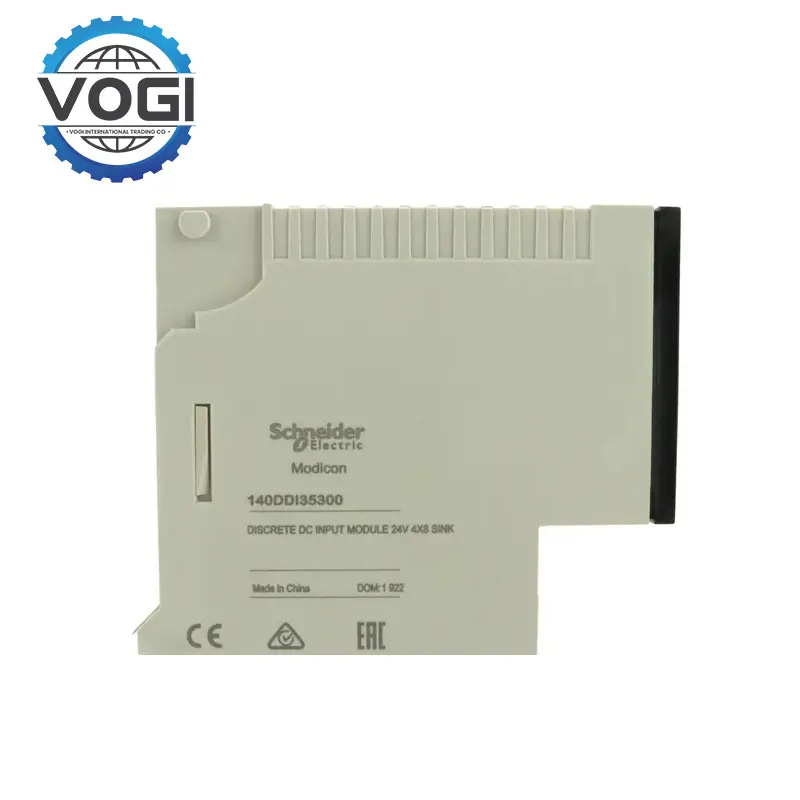Schneider 140DDI35300 Discrete Input Module
SpecificationsVogi
Input Configuration:Schneider 140DDI35300 offers 32 input points divided into 4 isolated groups (8 channels/group) for efficient signal management.
Voltage & Current
Operates at 24 VDC (5–30 V range) with an OFF-state reading of -3–5 VDC. Input current ranges from 0.5 mA (max) to 2.0 mA (min).
Performance:1 ms response time enhances real-time signal processing and control accuracy. Power consumption is 1.7 W (base) + 0.36 W per active input.
Communication:Requires 330 mA bus current for system communication and two input words for precise addressing in PLC programming.
Logic Type: Supports positive/sink logic circuits for compatibility with diverse industrial systems.
Key FeaturesVogi
Online Configuration: Enables real-time parameter adjustments (e.g., signal filter time, diagnostics) without halting operations, improving flexibility.
Signal Integrity: Group isolation minimizes cross-interference, ensuring stable performance in noisy environments. A 1 ms response time guarantees precise signal capture for higher control accuracy.
Energy Efficiency: Low power consumption (1.7 W) reduces heat generation, prolonging component lifespan and ensuring reliability in continuous industrial processes.
Freight Estimation(Part Of The Area)Vogi
|
Destination |
Freight |
|
Middle East |
$35 |
|
Southeast Asia |
$15 |
|
South Asia |
$45 |
|
South Africa |
$37 |
|
Europe and USA |
$24 |
|
Russia |
$42 |
Application ScopeVogi
Energy Generation: Monitors generator sets in thermal plants by collecting sensor data (oil/water temperature, pressure) and circuit breaker statuses for real-time operator oversight.
Smart Buildings: Integrates with HVAC and lighting systems to automate temperature, airflow, and brightness adjustments using sensor inputs (humidity, occupancy, light intensity).
Automotive Manufacturing: Controls robotic welding/handling systems and conveyor lines in body shops by processing robot status signals (ready/fault alerts) and motor commands to optimize production efficiency.








